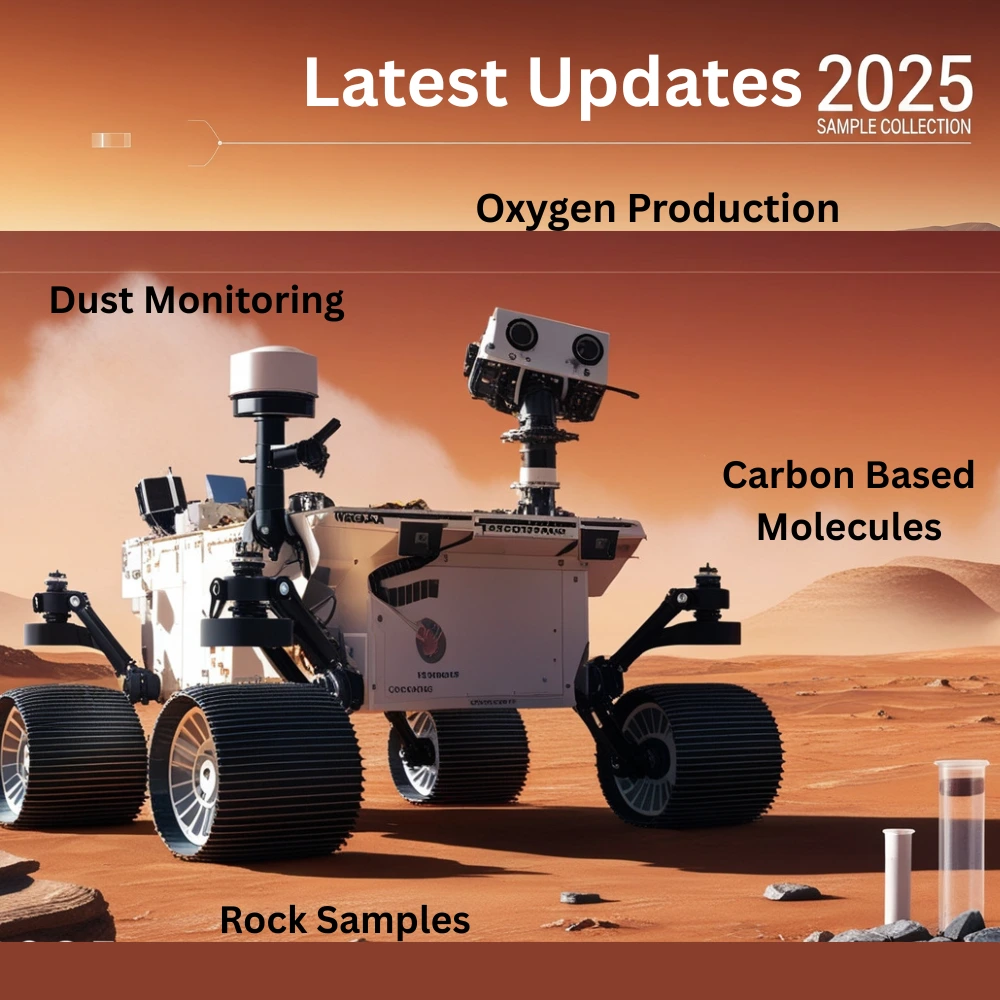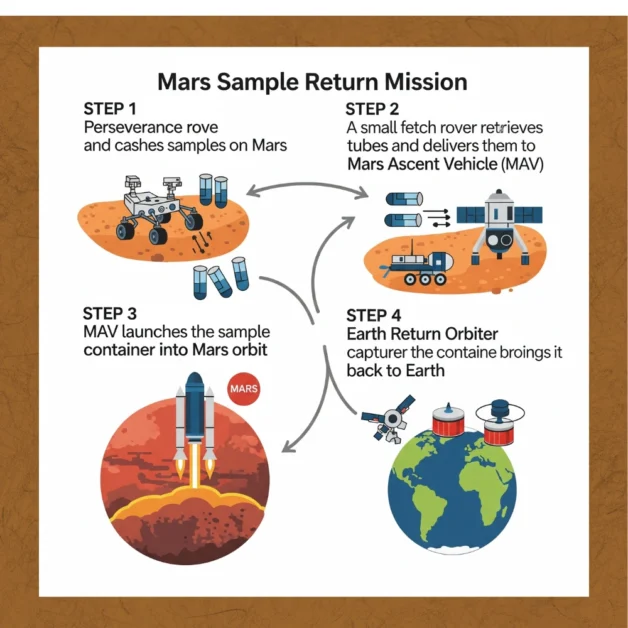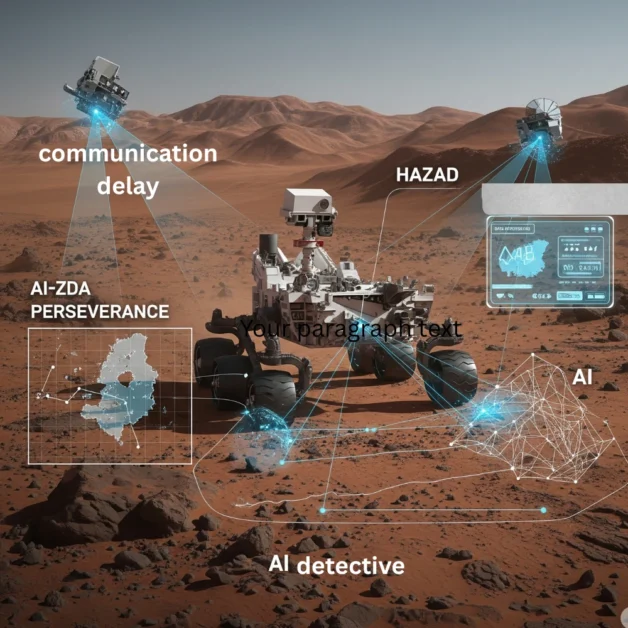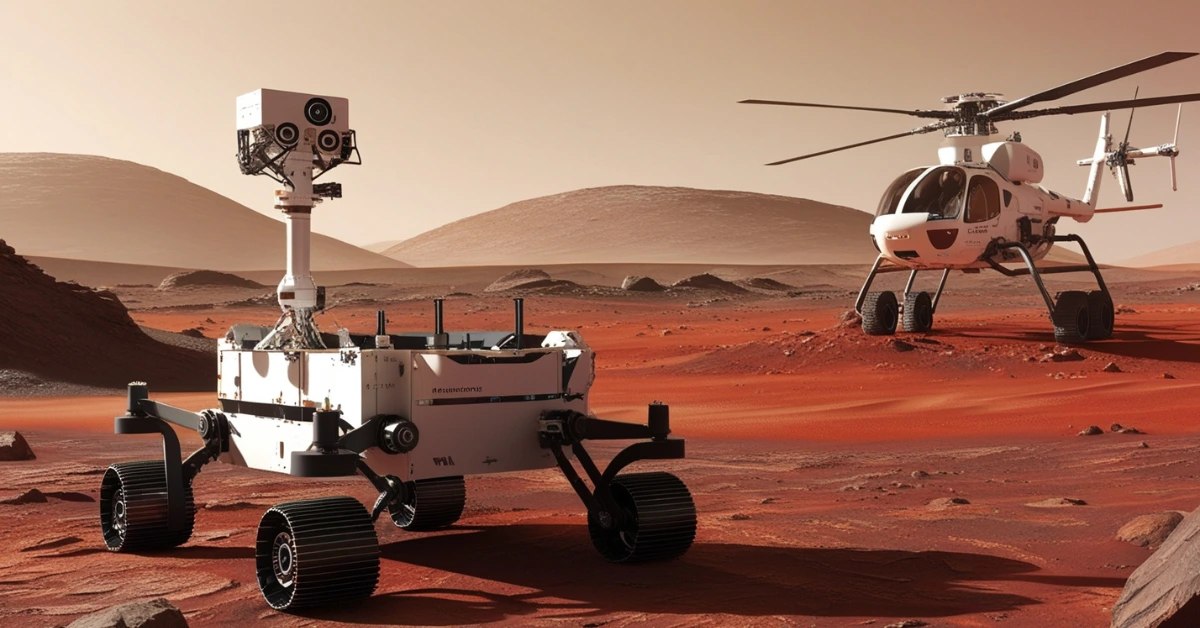Introduction
The Mars rover mission continues to amaze the world with its fascinating discoveries and the data it provides. By 2025, NASA’s Perseverance and China’s Zhurong rovers will continue to deliver valuable discoveries and scientific data from the Martian surface. Scientists are using this data to understand Mars’ past, its potential to support life, and to prepare for future human missions.
What Is the Mars Rover Mission?
The Mars rover mission refers to the robotic exploration vehicles sent by different space agencies to study Mars. These rovers are equipped with cameras, sensors, and tools that help gather data about the Martian soil, rocks, atmosphere, and possible signs of ancient life. The most well known Mars rovers include NASA’s Spirit, Opportunity, Curiosity, and Perseverance, as well as China’s Zhurong rover.
Why Mars Exploration Matters?
Before diving into the latest data, it’s important to understand why scientists are so focused on Mars. There are a few key reasons:
- Search for past life: Mars shows signs that it once had liquid water, an essential ingredient for life.
- Understand planetary history: Mars has preserved features from billions of years ago, offering clues about the early solar system.
- Future human missions: NASA and other space agencies are preparing for human missions to Mars. Understanding its terrain and conditions is crucial.
- Testing new technology: Rovers like Perseverance are testing tools and systems that could be used in future deep space missions.
The Latest Mars Rover: NASA’s Perseverance
Perseverance, also known as Percy, is the most sophisticated robotic explorer ever sent to another planet. Built by NASA’s Jet Propulsion Laboratory (JPL), it launched on July 30, 2020, and successfully landed in Jezero Crater on February 18, 2021. The landing was a historic achievement, broadcast live around the world and celebrated for its precise sky-crane maneuver.
Why NASA Chose Jezero Crater for Perseverance
Jezero Crater is an ancient impact basin believed to have once contained a deep lake about 3.5 billion years ago. Satellite images from orbit showed delta like formations, which typically form when rivers deposit sediments into a lake. This makes Jezero a prime target for searching for biosignatures, chemical or physical traces of past microbial life.
Inside the Toolbox: Perseverance’s Main Equipment
- SuperCam: Analyzes rocks and soil using lasers.
- MOXIE: Converts carbon dioxide into oxygen.
- SHERLOC: Looks for signs of organic compounds.
- Ingenuity Drone: A small helicopter used for aerial scouting.
Key Features of Perseverance
Here’s what makes Perseverance stand out from earlier rovers:
- Advanced Science Payload: It carries seven main instruments, including SHERLOC (for detecting organic compounds) and PIXL (a tool that maps the chemical composition of rocks).
- Sample Caching System: It’s the first rover to collect, seal, and store rock core samples for a planned return to Earth by the Mars Sample Return mission.
- Autonomous Navigation: Using powerful AI, Perseverance can drive itself over difficult terrain up to 200 meters per day without waiting for Earth-based instructions.
- Ingenuity Helicopter: Percy carried with it the first aircraft ever to fly on another planet, a small drone helicopter named Ingenuity, which continues to fly well beyond its planned mission.
- Weather Station (MEDA): It measures temperature, wind, humidity, and dust, helping scientists understand current Martian weather conditions.
- MOXIE Experiment: This test instrument has successfully converted CO₂ into oxygen, an essential technology for future human missions.
Latest Updates from Perseverance (2025)
Here’s a look at what Perseverance has recently discovered and done:
1. Rock Samples Collection
So far, Perseverance has gathered more than 20 rock samples, sealing them in protective tubes that are planned to be returned to Earth in a future mission. Scientists believe these rocks may contain clues about ancient Martian life and the planet’s water history.
2. Carbon Based Molecules Detected
Recent updates confirmed that carbon-based molecules were found in some of the samples. These molecules are important because they are often linked to life. However, scientists are still examining whether they formed naturally or through biological activity.
3. Weather and Dust Monitoring
The rover also tracks Mars’ weather and dust storms, which helps scientists understand the Martian climate and prepare for human missions. It’s observed that dust storms can appear suddenly and cover vast areas of the planet, affecting solar power and visibility.
4. Ingenuity Helicopter’s Success
Perseverance carried a small helicopter named Ingenuity. It was originally meant for only 5 test flights, but has now completed over 70 flights. Ingenuity helps Scout ahead of Perseverance, identifying paths and interesting research spots.
5. Oxygen Production Using MOXIE
A small but important experiment called MOXIE has been running on Perseverance. It takes in carbon dioxide from the Martian air and converts it into oxygen. This is a key step toward future human missions. If we can produce oxygen on Mars, astronauts won’t need to carry as much from Earth.
6. Signs of Ancient Rivers and Lakes
One of the biggest discoveries in recent updates is the confirmation of river channels and lakebeds. Perseverance has photographed and analyzed rocks that seem to have formed in flowing water. This strengthens the theory that Mars once had a much wetter climate, possibly suitable for life.
Check the Latest Data with “Zhurong Rover”
China’s Zhurong rover landed on Mars in May 2021. It was part of the Tianwen-1 mission. The rover explored Utopia Planitia, a flat plain that may have been a large ancient ocean.
Latest Updates from “Zhurong”
Although Zhurong went into sleep mode in 2022 because of dust buildup on its solar panels, reports in 2025 suggest that parts of the system may have reactivated. If successful, this would mark a big achievement in long term Martian exploration.
Here’s what Zhurong has contributed so far:
- Radar scans showed layers under the Martian surface, possibly indicating ancient water or ice.
- It sent back thousands of images from its journey.
- It measured atmospheric pressure and temperature regularly.
SpaceX Crew-10: Paving the Way for Mars Exploration
SpaceX Crew-10, launched under NASA’s Commercial Crew Program, marks the tenth successful crewed flight by SpaceX using its Crew Dragon spacecraft. Launched in early 2025, Crew-10 is a vital step not just for low Earth orbit missions, but for preparing humanity’s path toward Mars.
SpaceX Crew-10: How It Supports Mars Missions
- Autonomous Docking: Crew Dragon docks with the ISS using AI, similar to Mars rover navigation systems.
- Life Support Testing: Crew-10 evaluates health systems and long term space living, key for future Mars trips.
- AI and Automation: Astronauts test AI-based tools and robotics, reducing reliance on Earth instructions.
- Sample Handling: Crew-10 studies microgravity sample storage, helping prepare for Mars sample returns.
Curiosity Rover: Unlocking Mars’ Ancient Secrets
The Curiosity Rover, launched by NASA in 2011 and landed on Mars in 2012, has been tirelessly exploring the Gale Crater, a location believed to have once hosted lakes and rivers. Despite being older than newer rovers like Perseverance, Curiosity continues to deliver vital data about Mars’ geological history and climate patterns.
Curiosity is equipped with a range of scientific tools designed to study rocks, soil, and the atmosphere:
- ChemCam: This laser based instrument analyzes the chemical makeup of rocks and soil, helping scientists identify elements and detect past water activity.
- Sample Analysis at Mars (SAM): SAM investigates gases released from Martian soil and rock samples to search for organic compounds, which are essential building blocks of life.
- MastCam: These high-resolution cameras take panoramic and color images of the Martian landscape, aiding researchers in selecting key locations for further study.
Challenges Rovers Face on Mars
Even though the rovers are highly advanced, exploring Mars is not easy:
- Extreme cold can freeze parts of the equipment.
- Martian dust storms can reduce sunlight and potentially harm rover equipment.
- Long distances mean communication delays of up to 20 minutes.
- Battery limits affect how long rovers can operate each day.
Despite these obstacles, Perseverance and Zhurong have exceeded expectations.
How the Data Is Sent Back to Earth?
Mars is millions of kilometers away from Earth, so transmitting detailed data from the Martian surface is a complex process. First, the rovers send the collected data to satellites orbiting Mars. These satellites act as communication relays, transmitting the information back to Earth using powerful radio signals. Once the signals reach Earth, they are captured by NASA’s Deep Space Network, a global system of large antennae spread across different locations. From there, the data is forwarded to mission control, where scientists use advanced software and tools to analyze and interpret the information.
What the Data Means for Future Missions
Every byte of data from these rovers brings us closer to understanding if life ever existed on Mars and whether the planet could support human settlers one day.
Here’s how the new data is shaping plans:
1. Mars Sample Return Mission
NASA and the European Space Agency (ESA) are working on a Mars Sample Return Mission. This mission will bring back the rock samples Perseverance has collected. If successful, these samples will give scientists a close-up view of Mars’ chemical and biological makeup.
2. Preparing for Human Exploration
By studying Martian dust, temperature, and radiation levels, researchers can plan how to keep astronauts safe on Mars. Knowing where to find water ice is also crucial because it can be used for drinking, fuel, and breathing.
3. AI and Autonomous Systems Testing
Mars rovers are helping test autonomous navigation, which is when a robot makes decisions without waiting for instructions from Earth. This tech is essential for exploring places where communication delay is a problem.
Public Engagement and Open Data
NASA’s Mars mission data is open to the public. You can:
- View images and updates on NASA’s official website
- Watch videos from the rover’s cameras
- Read mission logs and science reports
- Even the name features discovered by Perseverance
This openness helps get students and researchers around the world involved in checking the Latest Data from the Mars Rover Mission.
Conclusion
The Mars Rover missions are more than just robotic explorers; they are our eyes and hands on the Red Planet. They collect crucial information about Mars’ geology, climate, and potential for life. The latest data from Perseverance and Curiosity paints a clearer picture of Mars as a once-habitable world.
If you’re fascinated by space and want to stay updated, make sure to follow NASA, CNSA (China National Space Administration), and other trusted sources. Mars is no longer just a distant red dot in the sky, it’s a world full of stories waiting to be uncovered.



